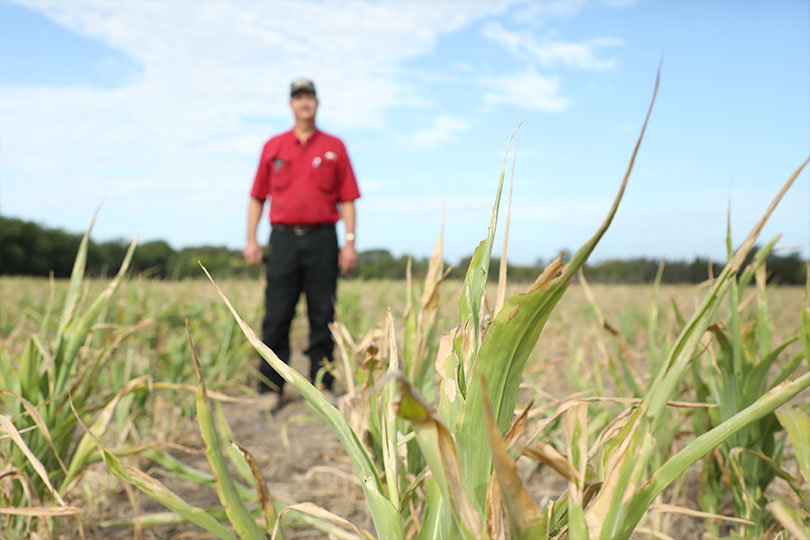The U.S. Department of Agriculture (USDA) is rolling out $3.7 billion in Emergency Relief Program (ERP) and Emergency Livestock Relief Program (ELRP) funds for those with qualifying disaster losses for 2022.
“U.S. agricultural producers nationwide endured crippling natural disaster events in 2022 including a megadrought, Hurricane Ian, epic flooding and catastrophic wildfires. To say these events were costly is an understatement,” U.S. Secretary of Agriculture Tom Vilsack said.
ERP 2022 for crop farmers
USDA, through the Farm Service Agency (FSA), intends to deploy the lessons learned from the development and implementation of ERP and ELRP for previous years’ losses to ensure expedited assistance for 2022 losses.
Based on positive feedback from producers, stakeholder groups and FSA county office staff, USDA intends to provide an ERP track for producers who had coverage through Risk Management Agency’s federal crop insurance or FSA’s Noninsured Crop Disaster Assistance Program (NAP). Through a streamlined application process, USDA intends to be in a position to send pre-filled applications directly to eligible producers in early summer.
For producers who have not been able to avail themselves of risk management coverage or whose losses were not covered, USDA intends to offer a program track to access ERP assistance with assistance provided to producers who suffered a decrease in allowable gross revenue in 2022 due to necessary expenses related to losses of eligible crops from a qualifying natural disaster event.
ELRP 2022 for livestock producers and close out of ELRP for 2021
For impacted ranchers, USDA intends to leverage the Livestock Forage Disaster Program (LFP) data to deliver ELRP assistance for increases in supplemental feed costs in 2022.
To be eligible for an ELRP payment for 2022 losses, livestock producers will need to have suffered grazing losses from wildfire or in a county rated by the U.S. Drought Monitor as having a D2 (severe drought) for eight consecutive weeks or a D3 (extreme drought) or higher level of drought intensity during the 2022 calendar year and have applied and been approved for 2022 LFP.
Otherwise eligible producers whose permitted grazing on federally managed lands was disallowed due to wildfire will also be eligible for ELRP payments if they applied and were approved for 2022 LFP.
In a continued effort to streamline and simplify the delivery of ELRP benefits, eligible producers will not be required to apply for payment.
FSA also intends to provide additional assistance to ranchers for qualifying livestock losses from drought and wildfire in 2021.
More information will be announced in the coming months.
How to prepare
To participate in ERP and ELRP for 2022 losses, both crop and livestock producers should have or be prepared to have the following forms on file with FSA:
- Form AD-2047, Customer Data Worksheet (as applicable to the program participant);
- Form CCC-902, Farm Operating Plan for an individual or legal entity;
- Form CCC-901, Member Information for Legal Entities (if applicable); and
- Form AD-1026 Highly Erodible Land Conservation (HELC) and Wetland Conservation (WC) Certification.
Most producers, especially those who have previously participated in FSA programs, will likely have these required forms on file. However, those who are uncertain or want to confirm should contact FSA at their local USDA Service Center.
In addition to the forms listed above, underserved producers are encouraged to register their status with FSA, using Form CCC-860, Socially Disadvantaged, Limited Resource, Beginning and Veteran Farmer or Rancher Certification, as certain existing permanent and ad-hoc disaster programs provide increased benefits or reduced fees and premiums.
Producers with eligible crop losses who did not have federal crop insurance or NAP risk management coverage for 2022 and intend to apply for ERP assistance will need to pull together revenue information that is readily available from most tax records. FSA encourages producers to have their tax documents from the past few years and supporting materials ready including Schedule F (Form 1040) and Profit or Loss from Farming or similar tax documents. FSA will not require these forms to be submitted with the ERP application, but will require a certification, similar to Adjusted Gross Income certification that has been used for many years for Farm Bill programs. Applicants simply report and certify to the information required for the program.
Crop producers who have federal crop insurance coverage should ensure that information on file with their insurance agent is accurate and that any pending activities needed to file loss claims for 2022 losses are addressed as soon as possible. Producers who received ERP assistance last year or who will receive assistance for 2022 losses are required to purchase crop insurance or NAP for the next two crop years.
Additional details
For questions and additional program details, contact your USDA Service Center.

